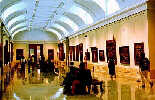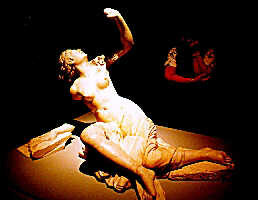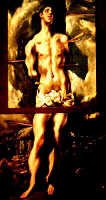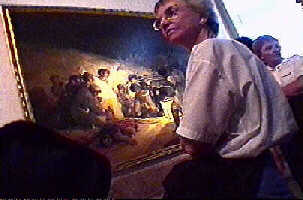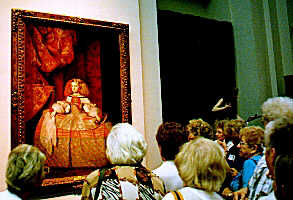|
Visitors were NOT permitted to use videocams inside the museum. As a consequence, I had to operate my video camera surreptiously--like a spy. That's why some of the pictures below look a little weird. (Most of the "pictures" in this travelogue are actually "frame-grabs" from the video tapes.)
The Prado holds a superb collection of paintings by the great Spanish masters such as Velasquez, Goya, Murillo, and El Greco. It is less well-known for its sculptures--but the Prado's many Roman statues and artifacts introduced us to Spain's ancient heritage. We learned that Spain was the birthplace of the emperor Hadrian and many other Roman notables. That was news to us!
|
